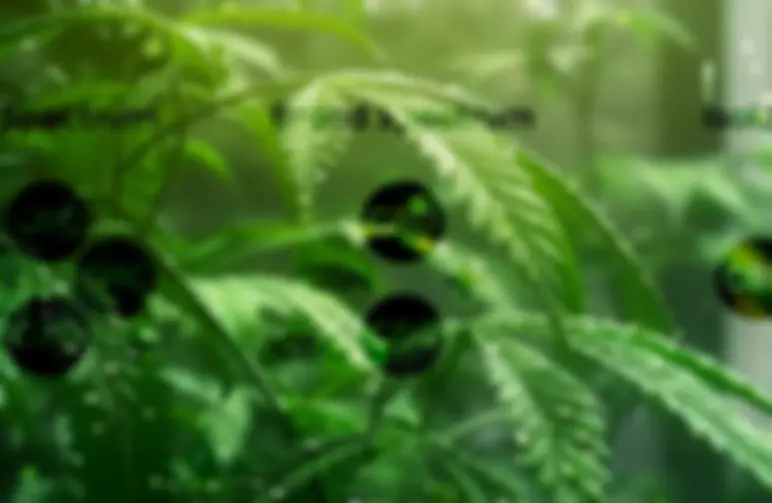If you want to grow cannabis at home that has a lot of CBD, you've probably heard of the terms full-spectrum, broad-spectrum, and CBD isolate. You can often find these labels on tinctures, oils, and gummies at the dispensary, but what do they mean for someone who grows their own? More importantly, can you change how you grow to get the most out of one over the other?
This guide will explain the differences between the different types of extracts, show you how each one relates to the plant itself, and help you choose the best ones for your home garden. At the end, you'll know exactly what to do, whether you want to grow plants for medicine, your own health, or just out of curiosity.
Getting to Know the Basics
- Full-Spectrum: This has all the cannabinoids (like CBD, THC, and CBG), as well as terpenes and flavonoids. You could say it's the "whole plant" experience.
- Broad-Spectrum: Like full-spectrum, but it usually doesn't have THC. Without the THC, the other cannabinoids and terpenes stay the same, creating a synergistic effect.
- CBD Isolate: Pure CBD, usually with a concentration of more than 99%, and it doesn't have any other cannabinoids or plant compounds in it.
These differences are important because they affect both the final product and the genetics you choose to grow.

Why the "Entourage Effect" is Important
The entourage effect is the name for how cannabinoids and terpenes work together to make the therapeutic effects stronger. For instance, CBD and myrcene together may make you feel more relaxed than CBD alone. Many growers like full-spectrum strains because they naturally have a balance of compounds that are hard to copy in isolates.
Picking the Right Seeds for Full-Spectrum CBD
If you want a full-spectrum harvest, choose strains that have a wide range of cannabinoids. A lot of high-CBD photoperiod and autoflowering strains are made to keep THC below 0.3% (to follow hemp rules) while still having secondary cannabinoids like CBG or CBC.
Some well-known strains with balanced profiles and medical uses are Harlequin, Pennywise, and Sour Tsunami.
Broad-Spectrum: Meeting Legal and Personal Needs
Some growers need to stay away from THC completely. This could be for personal reasons, work tests, or laws in the area. You can make broad-spectrum CBD by growing hemp strains that naturally test negative for THC but still have other cannabinoids.
This is easier now because of advances in breeding. More and more home growers can now get strains that are sold as "THC-free hemp." Before you buy, make sure the seed bank you choose has certificates of analysis (COAs).
CBD Isolate: Why It's Hard to Grow
The catch is that you can't grow "isolate" at home. You don't get CBD isolate directly from the plant; instead, you get it through extraction and refinement after the plant has been harvested. You can grow hemp with a lot of CBD and then use ethanol or CO₂ extraction to turn the biomass into isolate. This usually requires lab-grade equipment.
Isolate isn't useful for most people who grow plants at home. Instead, think of isolates as something that comes from processing, not growing. If you want to be pure, pick high-CBD strains and work with a lab in your area to extract them.
A Quick Comparison of Regional Rules
California: Adult-use laws let growers choose full-spectrum strains of cannabis with higher THC levels. Hemp growers can't have more than 0.3% THC, but medical growers can choose strains with a balanced amount of CBD and THC.
colourado: Hemp farmers have to pass strict compliance tests, but they can also use it for adults. A crop that has more than 0.3% THC must often be thrown away. Home growers who want to grow CBD should stick with stable, tested genetics to avoid losing plants.
How to Grow Cannabis at Home That Has a Lot of CBD
- Pick seed banks that are well-known and have clear lab-tested cannabinoid profiles.
- When to harvest is very important: Keep a close eye on the trichomes because CBD levels peak a little earlier than THC levels.
- Outdoor growers should think about the laws in their area, especially when it comes to how hemp and cannabis are classified.
- Drying and curing are important because you need to keep terpenes if you want a full-spectrum effect.
Important Points
- Full-spectrum: best for getting the most therapeutic benefits from the entourage effect.
- Broad-spectrum: the best choice if you want CBD and terpenes but not THC.
- Isolate: you can't grow it directly; you have to process it after harvesting.
- Always choose seeds that are right for your goals and the laws in your area.
Questions and Answers about Full-Spectrum, Broad-Spectrum, and Isolate CBD
1. Is it possible to grow full-spectrum CBD at home?
Yes. Most high-CBD hemp or balanced strains naturally have a full-spectrum cannabinoid profile.
2. How do I grow CBD plants that work on a wide range of things?
Look for hemp genetics that don't have THC. These make CBD and other cannabinoids, but not much THC.
3. Is it possible to grow CBD isolate at home?
No, you need to extract isolate in a lab. You can only grow the raw material, which is hemp with a lot of CBD in it.
4. Isolate or full-spectrum: which is better?
Most people get more benefits from full-spectrum because of the entourage effect. If you only need pure CBD, isolate is helpful.
5. What kind of plant is best for growing CBD at home?
Harlequin, Pennywise, ACDC, and Sour Tsunami are all popular choices because they have stable genetics and reliable CBD levels.








